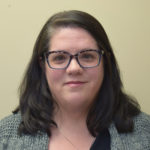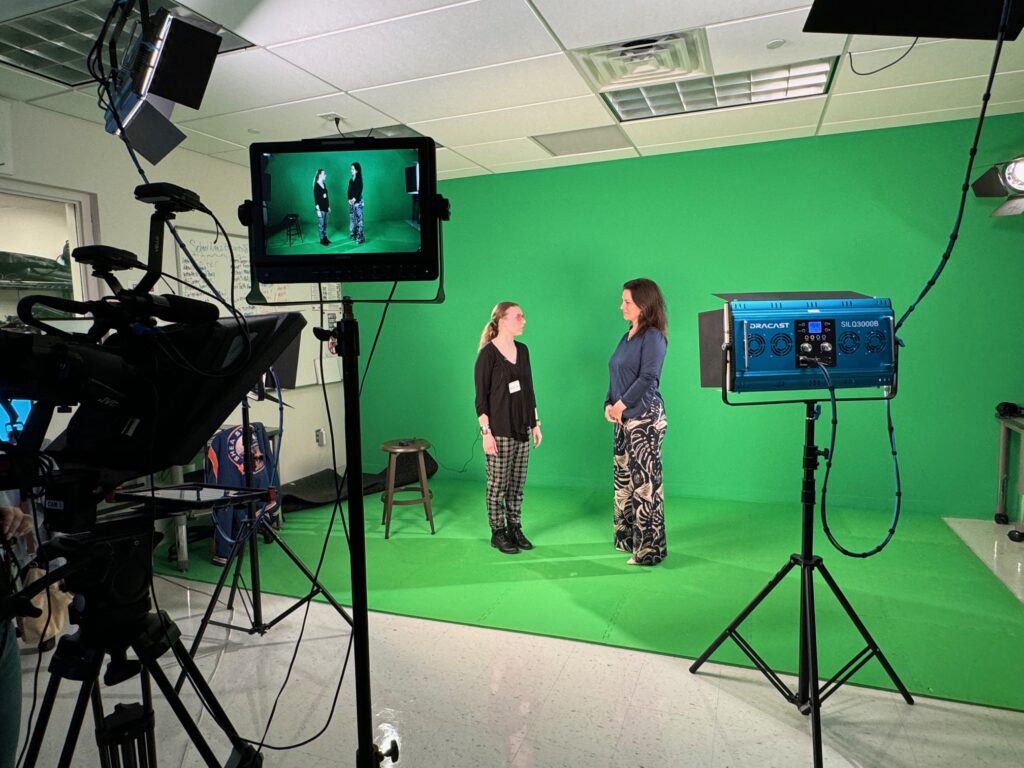Academy360 is excited to be working with the Pyramid Educational Consultants to facilitate a classroom experience that seeks to instruct the whole child in a more natural, social environment. De-emphasizing one-to-one instruction, the Pyramid Approach is a team-based discipline, with classroom professionals working in tandem to address students’ communicative, social, and academic objectives in a fully-integrated program.
 Developed in 1992 by experts at Pyramid Educational Consultants, the company behind the PECS communication system, the Pyramid Approach aims to foster a team-based approach with a focus on functional communication, reinforcement, and designing teaching strategies to support learners in their everyday environments and activities.
Developed in 1992 by experts at Pyramid Educational Consultants, the company behind the PECS communication system, the Pyramid Approach aims to foster a team-based approach with a focus on functional communication, reinforcement, and designing teaching strategies to support learners in their everyday environments and activities.
As explained by Pyramid, “Maximizing learner outcomes requires not only information about what and how to teach – it requires a plan to put all the pieces together. The Pyramid Approach provides a clear guide for everyone on the team to determine what elements to address in a specific order. Just as building a pyramid begins with establishing a firm foundation before constructing the body of the building, the Pyramid Approach begins with a strong foundation, relying on a science-based approach to teaching.”

In plain language, the approach is a game plan for all classroom professionals – teachers, paraprofessionals, speech therapists, behavior analysts – to bring together all their skills to devise and implement instruction for each child and to execute it according to the Pyramid principles.
Four classrooms – two at Academy360’s Lower School and another two at the Upper School – were initiated last year with the Pyramid Approach, and four additional classrooms are being trained in the approach this year. The goal is to eventually use the Pyramid Approach in all A360 classrooms where it is a good match for the student population.
Robin Scheib, Speech Pathologist and Director of Related Services at A360, explains how it works in practice:
“While in school, educators are taught that there will be a curriculum you follow which is taught to all students uniformly. The expectation is that students will absorb the lesson – whether it is reading, arithmetic or other fundamentals – and independently apply the concepts learned to the world around them. When you work at our school, you realize that the focus really is ‘How can I make these kids as independent as possible?’ How do we prepare them for their futures? That means instructing students in the building blocks of learning, such as teaching how to ask for things, before worrying about ABCs…helping them to learn to apply concepts learned in the abstract in various environments.”
Dr. Tony Castrogiovanni, the Pyramid consultant working with A360’s teachers, picks up that train of thought:
“One of the raps on schools of education is that teachers come out of school with a lot of theory and little practical knowledge of the classroom and the children. And oftentimes they’re left to pick that up from their student teaching time and mentoring from other teachers.
 So, Pyramid takes what is considered best practices in the field of behavioral education, bringing together the best of all disciplines to the approach. We’re saying to them, ‘How can we help you teach better?’ Not telling them what to teach, because they know how to do that for their students. But how can we make it better?”
So, Pyramid takes what is considered best practices in the field of behavioral education, bringing together the best of all disciplines to the approach. We’re saying to them, ‘How can we help you teach better?’ Not telling them what to teach, because they know how to do that for their students. But how can we make it better?”
The Pyramid Approach is not as much a “new” way of teaching, explains Robin, as it is a system of involving every person in the classroom to create a unified educational environment.
The teachers, paraprofessionals, and others in the classroom are guided to initially look at each child individually and assess what skills they have. Pyramid uses a critical skills checklist to identify what the student is lacking in terms of receptive language, understanding, and expressive language. Unified instruction begins from there.
“We began in September with a full-day training session,” says Kristen Bratkowski, one of the Lower School classroom teachers participating in the program. “From that point. Dr. Castrogiovanni gave all involved staff assignments, like filling out those checklists, coming up with highly preferred items that the kids enjoy working for, coming up with goals, areas of need per kid, and then starting to work on creating natural environments. Each month he comes and observes, and we meet and get feedback.”
ELEMENTS OF THE PYRAMID

Functional activities provide a context in which learners can acquire and practice skills, creating meaning for the learner – “I’m doing this for a reason”. There’s an emphasis on interactive learning, such as cooking, snack groups, playing motion games. Students may be learning colors, but rather than only identifying colors during one-to-one instruction at the desk, the goal is to have them do different activities which create situations in which they can generalize the information.
Promoting functional communication is also a key element of the pyramid. According to Dr. Castrogiovanni, “How students are communicating is another piece of the foundation. We’re the PECS (Picture Exchange Communication System) people, yes, but I don’t care if the child ever uses PECS. The only concern is that they communicate – in whatever modality. If PECS is appropriate, great. If a tablet is appropriate, great. Whatever it is, it is. But we want to be sure every student communicates because that’s foundational to all the learning.” The priority is a student’s ability to make requests for preferred items, to ask for help or for a break, and to communicate instead of exhibiting behavior that is inappropriate.
Generalization of skills is another emphasis of the Pyramid Approach. “It’s a big thing that we work on right from the beginning,” says Dr. Castrogiovanni. “We don’t train to mastery and then try to generalize, we generalize right from the beginning.”

Which means it is important to give students an “anchor” to hang knowledge on. Rather than learning facts in isolation, information is incorporated into different activities throughout the day.
“Counting 1, 2, 3 on the board or a flash card doesn’t translate to students being able to give someone three of something,” Robin says. “Learning a number concept of three and then being able to do everything associated with three is a start. We want to do things in multiple situations, so they understand all the different ways they might interact with that information.”
So students might practice counting three plants in the greenhouse, three doors in the hallway, three basketballs in the gym, three puzzle pieces on the table – all designed to carry that lesson throughout the day, and not lock in on one specific environment.
“It’s embedding the generalization into everyday tasks,” continues Kristen, “I have a student who is working on pronouns. And he got it during trials, but when it was in a different context in a curriculum material for language, he wasn’t getting it. And it opens your eyes – he has not generalized that skill because he couldn’t do it away from that desk.”
IN THE CLASSROOM
 Ultimately, Dr. Castrogiovanni says, everyone needs to know what everyone else in the classroom is doing so that while each staff member has their own role, they understand how it works as a whole.
Ultimately, Dr. Castrogiovanni says, everyone needs to know what everyone else in the classroom is doing so that while each staff member has their own role, they understand how it works as a whole.
“That’s the only way that it can all work together, so that we’re not carving the kid up, so to speak. Not ‘this is your piece of the kid, and this is your piece, and this is your piece.’”
Kristen feels she and the other staff members are making great strides in this area.
“It’s a work in process,” she says. “There’s a lot for the teacher to keep up with, but we’ve made progress with understanding and following the protocols. I do see myself growing, I do see my paras growing, with my guidance and Dr. Castrogiovanni’s guidance.”
The Pyramid Approach benefits are being felt beyond the classrooms in which is it being used at Academy360.
“The principles and concepts that we’re learning in these focused classrooms are being carried over throughout the schools ,” says Robin.

And Kristen believes the training is certainly proving to be worthwhile. One of her biggest triumphs, she says, is a student who was frustrated in the classroom and not making progress. Using what they’ve learned, they were able to turn his difficulties around.
“He is so much happier. He’s learning, and that’s why we’re here. If he’s not happy, he’s not going to want to be here and behaviors are going to occur. He’s communicating so much more, It’s amazing.”
Lisa Crouch is the Assistant to the Public Information Officer. Prior to working at Spectrum360, she worked at Yahoo, MSN, The Bergen Record, and other media outlets. She has a BA in English Literature from Columbia University. She is the proud aunt of an Academy360 Lower School student. In her off time, Lisa is a digital artist and writer.
is the Assistant to the Public Information Officer. Prior to working at Spectrum360, she worked at Yahoo, MSN, The Bergen Record, and other media outlets. She has a BA in English Literature from Columbia University. She is the proud aunt of an Academy360 Lower School student. In her off time, Lisa is a digital artist and writer.


